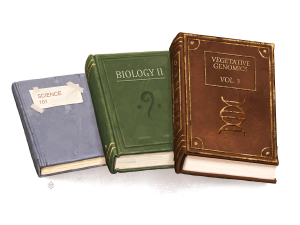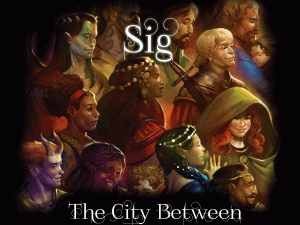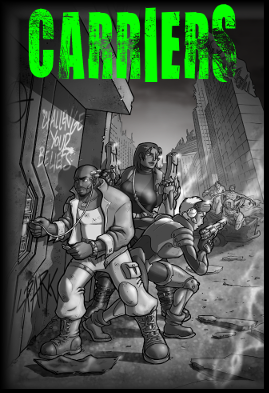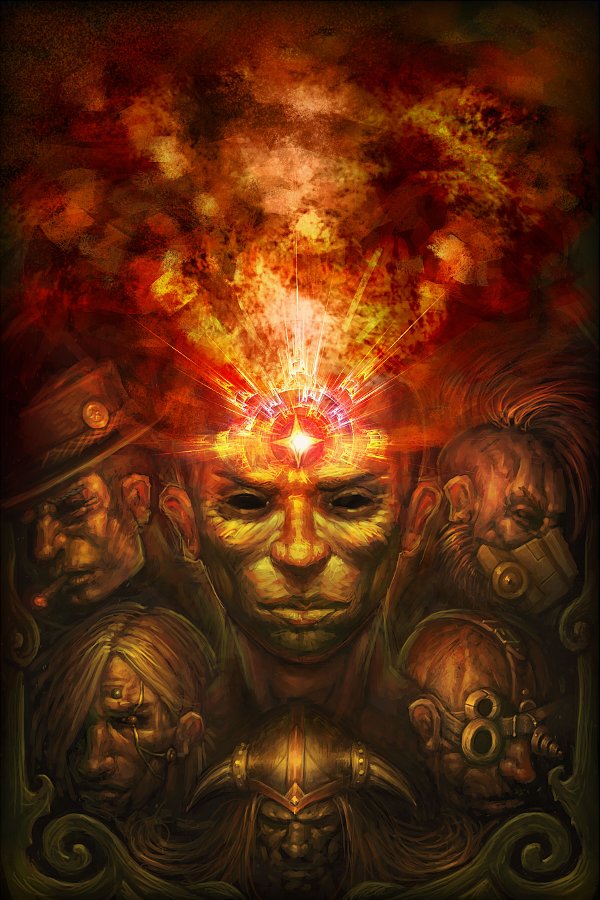The Price of Publishing
The independent roleplaying game scene is fantastically accessible, relative to other forms of game publishing. One of the challenges for a new game publisher is in determining an initial budget for their projects. I’m here to help you with some advice on how to allocate your scare resources.
Before we get started, I recommend you check out the excellent article on publishing costs that Fred Hicks published a couple years back. http://www.deadlyfredly.com/2014/10/dd-mysterious/ When you are done with Fred’s article, come on back and we will get started.
Set-up Costs
There are a ton of potential expenses in the world of publishing, but here is the basic set of affordable tools that have served me well in my publishing career. Grab these as early as your career as possible, and allocate some time for learning.
- A word processing program. The free options are the open-source LibreOffice, or potentially Google Docs. When you have the resources down the line, Microsoft Office is pretty commonly used.
- A photo-manipulation program. I personally love the free, open-source program known as The GIMP and use it to this day. Adobe Photoshop is another option for this role, though it’s costly.
- A vector illustration program. I use the free, open-source program Inkscape, and it will serve you well. Adobe Illustrator is another commercial option, though it is costly.
- A layout program, such as the free, open source program Scribus or the more expensive and professional Adobe InDesign.
- An ebook format program, specifically the open source program Calibre.
- The Non-Designer’s Design Book, by Robin Williams. This should cost you about $25 USD, and it’s worth every penny.
- A copy of Scrivener, by Literature and Latte. This should cost you about $40 USD, and I have found it to be an invaluable tool for outlining and initial drafting of RPG texts.
- A variety of free or pay-what-you-want RPG texts, including Fate Core (http://www.drivethrurpg.com/product/114903/Fate-Core-System) , Dungeon World (http://acodispo.github.io/Dungeon-World-HTML-SRD/ ) , Dungeons and Dragons 5th Edition (http://dnd.wizards.com/articles/features/basicrules ) and Lady Blackbird (http://www.onesevendesign.com/ladyblackbird/)
For those who have been counting, the baseline costs for those items above is about $65 USD or $100 CAD. For publishers with some additional resources, an Adobe Creative Cloud subscription will let you get the tools for #2, #3 and #4 for relatively cheap.
General Publishing Expenses
Expenses for game publishing tend to fall in a few categories. When I say “Day”, I mean a morning writing sprint or an evening after work. Most of my weekends tend to have 3-4 “Days” worth of writing when I’m productive.
- Writing, both mechanics and fiction. I tend to assume I can produce about 500 words of high-quality text in a day, for budgeting purposes. If I hire freelance writers to do this work, the baseline rate of pay is 5 cents per word.
- Playtesting. I tend to give myself a playtesting budget of 1 playtest per 1000 words of text as a rule of thumb. I call each playtest about a day worth of effort, both for the day itself and for the revision process afterwards.
- Editing, both developmental editing (structural) and copy editing (grammar). Since it is impossible to effectively edit your own work, I budget 2-3 cents a word for freelance editors.
- Art is extremely variable, and can be a place where you save or invest a great deal of money. Fred’s blog gives some great numbers for planning purposes. Don’t forget to consider public domain images, creative commons, and icons (thenounproject.com or game-icons.net).
- Layout can be done affordably with some skill, patience and time. If you do it yourself, allocate about a day per 1000 words of text you are laying out. This assumes that you don’t have the necessary skill-set and you are learning the tools. If you want to hire it out, decent baseline prices are in the $500 to $1500 range.
- Production is highly variable, and will be discounted from this. For the purposes of this budgeting exercise, I assume that any print products are produced via DrivethruRPG Print on Demand service, which has no up-front cost and thus can be excluded from these discussions.

Microgame Budget
This category of games are the smallest in scope, usually associated with game design competitions such as Game Chef. These are the thought-pieces, experimental works, and highly focussed designs. My own (award-winning) game Posthuman Pathways falls in this category, for example, as would Lady Blackbird.
For a project this size, your wordcount tends to be 4000-6000 words. A bare-bones budget for a microgame assumes that most of the investment is in time. I will use 5000 as the baseline, which tends to come to about 20 pages of a digest-size book.
- Writing: Approximately 10 days of solid writing.
- Playtesting: 5 playtests, which includes another 5 days for revision.
- Editing: For a bare-bones editing, hiring an editor at 2 cents/word will cost you $100 for this.
- Art: If your text is minimal and you use free sources of art, you will only really need a cover. You may be able to secure re-use rights for ~$150, if you can find a suitable piece in an artist’s portfolio.
- Layout: By doing this yourself, it will take approximately 5 days of work to lay-out the work.

Total Resources: 20 days of work, $250
Adding Extras: If you want to add additional resources to a microgame, commission additional art; 2 half-page images and 2 spot-images, which would run you about $150 according to Fred’s numbers. I would also recommend another 5 days, dedicated to playtesting the text (to ensure clarity) and polishing the prose. Microgames often have less tolerance for unclear language, so your game would benefit from the additional time.
For Reference: Real-world budget of a microgame: Posthuman Pathways (https://www.kickstarter.com/projects/Jagash/posthuman-pathways/posts/887880)
Indie Game Budget
The story game community has a long history of producing games that are full of narrative complexity, but relatively small in size relative to the traditional RPG products. These tend to be commercially viable products that can be sold in stores easily and often amass a following.
For a project this size, your wordcount tends to be 20k-40k words. Producing a professional quality product at this scale is not an easy task, but it’s often worth it. I will use 30,000 words as the baseline, and assume this is about 120 pages.
- Writing: Approximately 60 days of writing and revising.
- Playtesting: 15 playtests if it’s based on an established system, 30 if it’s a brand-new resolution system. About 20 more days of additional revision work.
- Editing: Hiring an editor at the minimum of 2 cents/word will cost you $600 for this. If you expect multiple revision passes or significant developmental editing work, allocate another cent/word for the additional work by that editor or another one.
- Art: For a piece this size, you are likely going to need a new custom cover (~$400), at least six half-page pieces ($300), and at least 8 quarter page pieces ($200). I tend to go very light on commissioned art in my work and have had to be creative, but that will only go so far. These numbers will allow you to put in one piece of art for every 10 pages, which is light in terms of art, but some layout tricks can help minimize this.
- Layout: Layout for a project like this is a big task. By doing this yourself, it will take approximately 60 days of work, assuming you have already learned the basic skills and have all the resources necessary. You may be able to get someone to lay this out for you for $1500, and that’s a _fantastic_ use of kickstarter funds, but I will assume you do it yourself.
Total Resources: 140 days of work, $1500
Adding Extras: If you have extra resources, I would strongly recommend paying the additional amount for editing ($300), adding some full-page art pieces ($400) and another $300 worth of smaller pieces. Hiring someone someone to do professional layout (~$1500) is expensive, but also shaves two months of your own work off the timeline and will get you a much better product while you are at it. You could spend some of that additional time playtesting the text, demonstrating the game at conventions and preparing additional material.
For Reference: Sig: The City Between
My latest kickstarter project was in this category although with a smaller wordcount and with full colour interiors. I allocated $750 to editing, $750 to art, and about $200 for indexing work. I cheated heavily on the art budget by reusing parts of the cover, and intentionally making the text align with some of Gustave Dore’s public domain work.
Major Game Budget
This is for the Fate Cores, Dungeon Worlds or Urban Shadows of the world; hefty and impressive games that usually hit about 60K-100K. I have yet to produce a game of this size, but here is how I would roughly budget for a project of this scope based on my current knowledge set.
Games of this size depend on kickstarter for development/production costs, and offset print runs. These tend to be about 300 pages of digest sized text, or 200 of a larger, letter-sized book. All of these prices are based on a 75K book.
- Writing: This would take about 5 months of dedicated writing time. Even if the publisher is the lead on the project, I would recommend hiring freelance writers for at least a third of the book. (~$1,250)
- Playtesting: Of all of the elements, playtesting needs to be scaled up the least. I would still recommend about 50-75 playtests if possible. About 2 months of additional revision work would be needed.
- Editing: Hiring a pair of editors; one developmental and one for copyediting will cost you at least $2000 for this, and likely closer to $3000.
- Art: I don’t honestly know where to start. A stunning cover (~$750) and at least $2000 of additional art would probably do the trick, but this would depend heavily on your specific needs. By reference, my quick count for Urban Shadows (at my side) had at least 25 full-page greyscale pieces, which would run $2,500 when using Fred’s numbers.
- Layout: You are paying for a professional for this, unless your name happens to be John Harper or Daniel Solis. Budget $2000-2500 for this.
Total Resources: ~6 months of work, ~$9000
Comments?
I would love to hear your thoughts in the comments below. Did I over-allocate funding in any given category? Skimping too much on editing? This is all more art than science, and I would love your wisdom. I’m especially interested in additional information to revise the Major Game budget numbers.
(Note, article has have taken 3-4 days of writing time, no editing costs, and re-uses art. No layout costs. )


